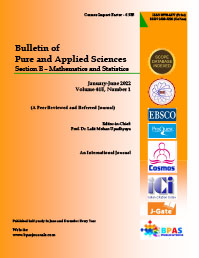New types of graphs on cordial labeling ∗
DOI:
https://doi.org/10.48165/bpas.2023.42E.1.5Keywords:
Shell graph, subdivided shell graph, star grap, super subdivision, circular ladder graphAbstract
Let f be a function from the vertices of a graph G to {0, 1} and for each edge xy assign the label |f(x) − f(y)|. f is called as a cordial labeling of G if the number of vertices labeled 0 and the number of vertices labeled 1 differ by at most 1 and the number of edges labeled 0 and the number of edges labeled 1 also differ at most by 1. In this paper we prove that star glued with subdivided shell graph and super subdivision of circular ladder graph admit cordial labeling.
References
Cahit I. (1987). Cordial graphs: a weaker version of graceful and harmonious graphs, Ars Combin., 23, 201–207.
Cahit I. (1990). On cordial and 3-equitable labelings of graphs, Util. Math., 37, 189–198. [3] Gallian J. A. (2020). A dynamic survey of graph labeling, The Electronic Journal of Combinatorics, #DS6.
Ho, Y. S., Lee, S. M. and Shee, S. C. (1989). Cordial labelings of unicyclic graphs and generalized Petersen graphs, Congr. Numer., 68, 109–122.
Liu, Y. Z. and Zhu, B. (2007). A necessary and sufficient condition for a 3-regular graph to be cordial, Ars Combin., 84, 225–230.
Rosa, A. (1967). On certain valuations of the vertices of a graph, Theory of Graphs (International Symposium, Rome, July 1966), Gordon and Breach, N. Y. and Dunod Paris, 349–355.
